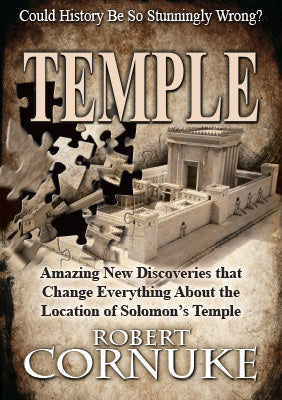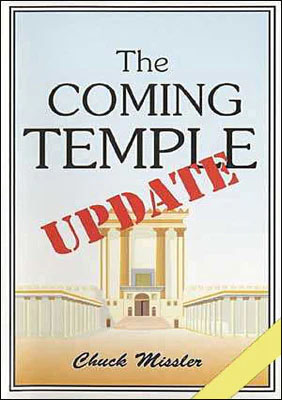Each year, the Jerusalem Temple Conference proves to be one of the best ways to keep up-to-date on the progress being made in preparing to rebuild the coming Temple.
Precise Location?
One of the controversies involves the actual location of the original First and Second Temples. The traditional site, of course, is the Dome of Rock, the prominent Muslim shrine which dominates the Temple Mount. Most of the rabbis in Israel take this site for granted.
Many have become aware of Dr. Asher Kaufman's research, which deals with the possibility that the Temples may have stood about 100 meters to the north of the Dome of the Rock.
Perhaps the most provocative conjecture has emerged from Tuvia Sagiv's studies which suggest a location to the south of the Dome of the Rock. (Each of these views have been previously presented in our newsletters, briefing packages, and the publications from the previous Conferences.)1
Infrared Fly-by
The most interesting session at the Fourth Annual Jerusalem Temple Conference was, again, Tuvia Sagiv's presentation. Tuvia first reviewed a number of the traditional view's questionable aspects which emerge from 3-D computer studies, including elevation problems conflicting with ancient records citing both Agrippa's and Titus' apparent ability to view the Azarah, the water aqueduct implications, etc. He then showed us infrared photography, taken only two weeks earlier on a fly-by over the Dome of the Rock.
Since the differential rates of cooling can often reveal subterranean structures, these techniques can be quite revealing under the right conditions.
The heat-sensitive photography reveals a pentagonal structure underlying the present Dome. This pentagonal structure may have been Strato's Tower, part of the Antonia Fortress. A similar pentagonal structure, also called Strato's Tower, was part of the Roman buildings at Caesarea, on Israel's Mediterranean coast.2
Aristobulus I, King of Judea 104-103 b.c., had his brother Antigonus murdered in a subterranean passage to Strato's Tower, which was between the Temple and the Antonia Fortress proper.3 This would seem to indicate that the rock outcropping presently covered by the famed Dome of the Rock was actually part of the Antonia Fortress, not the Temple. This makes much more sense since this also would place the fosse (moat) north of the Antonia rather than between the Antonia and the Temple.
Jerusalem was always vulnerable from the north, as it is protected by valleys on the east, south, and west. The ancient records also indicate that the Antonia was directly adjacent to the Temple precincts. It all seems to make sense.
Conclusion
Only real access to the mount and careful archaeological exploration will resolve these controversies. And the volatile political situation renders speculation pointless. Since Moshe Dayan--in his own "land for peace" deal--granted control of the Temple Mount to the Muslim WAQF, it will take some major changes to even permit serious investigations to take place, let alone any rebuilding dreams.
But we do know that the Temple will be rebuilt. Paul, John, and our Lord all make reference to the Temple in events immediately preceding Christ's Second Coming.4 And the preparations have begun. The major components are moving into place for the final countdown. Have you done your homework?
Notes:
- The Coming Temple: UPDATE, Koinonia House.
- Flavius, Josephus, Wars of the Jews, III. 5.
- ibid. III. 4.
- 2 Thessalonians 2:4; Revelation 11:1-2; Matthew 24:15








